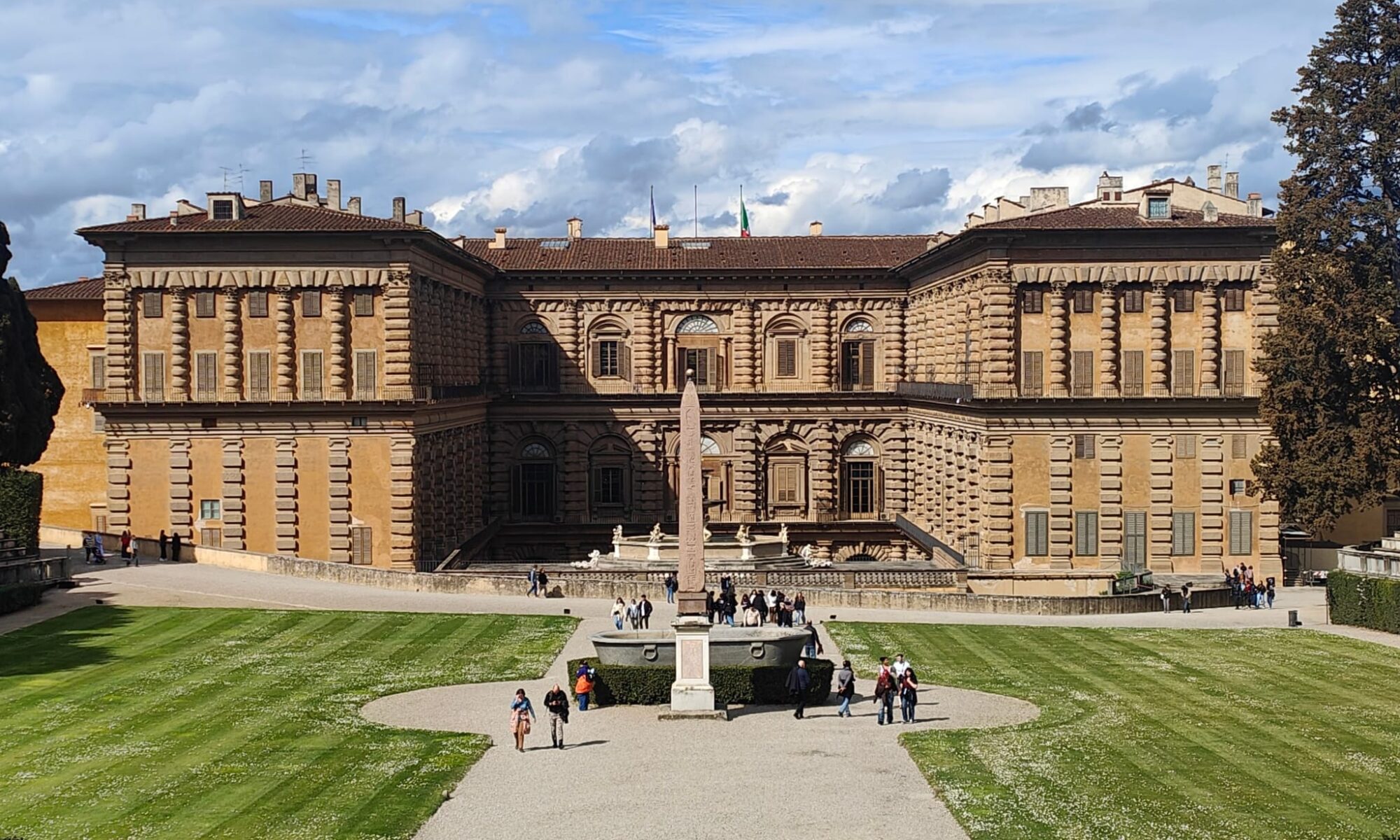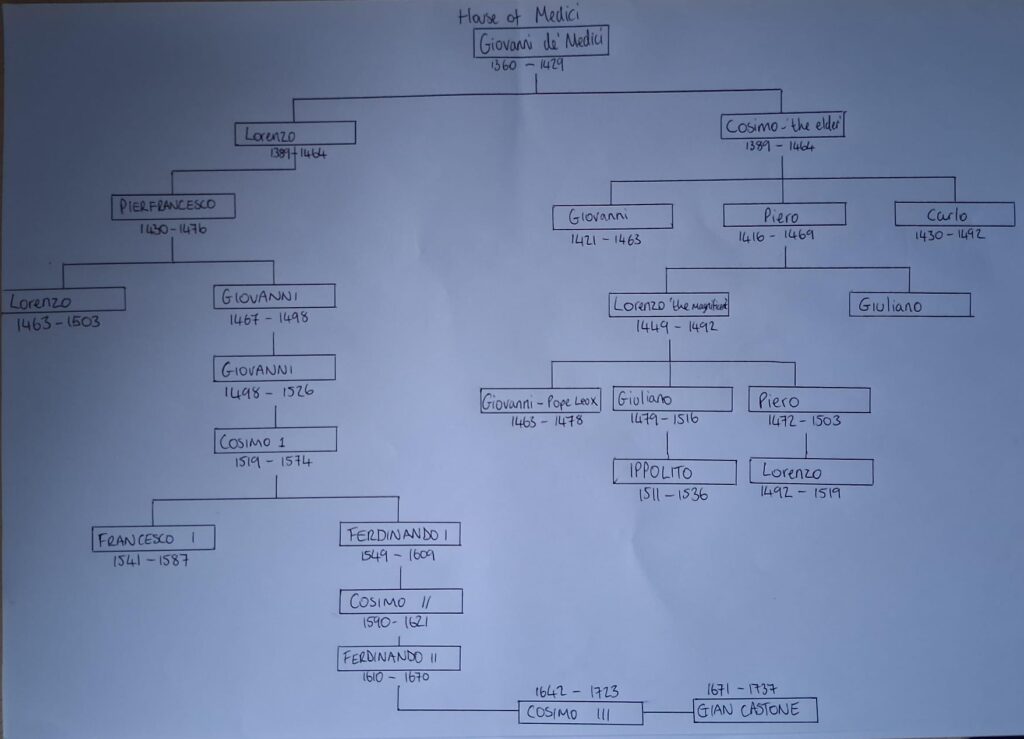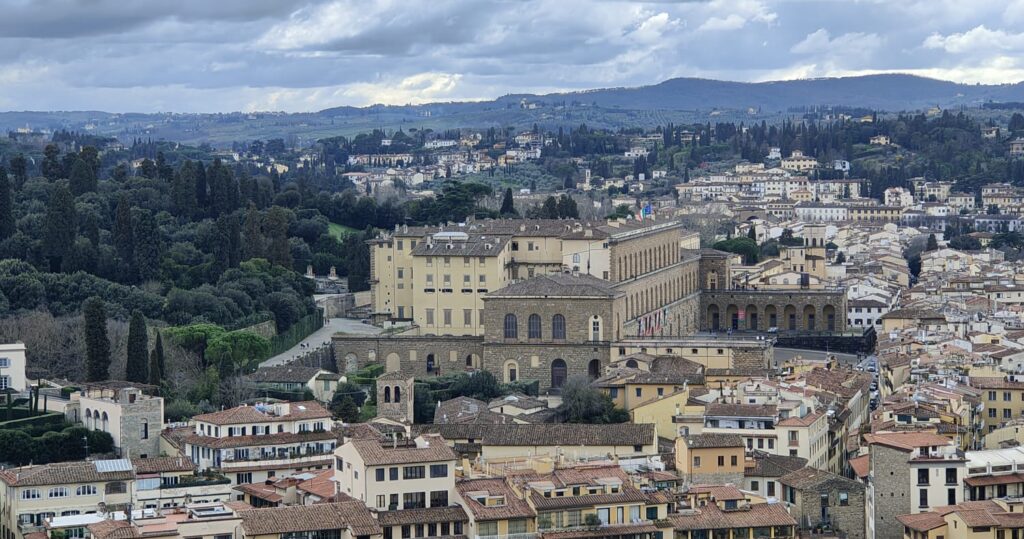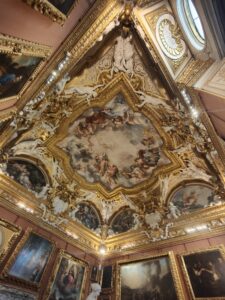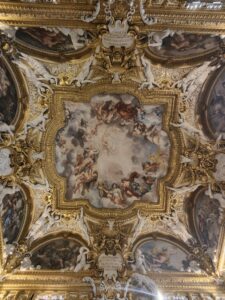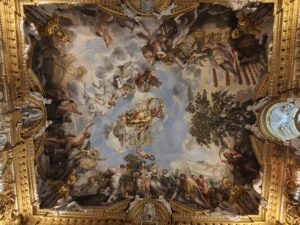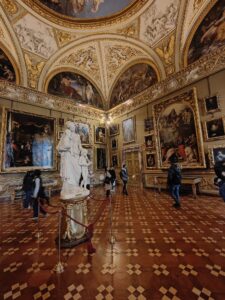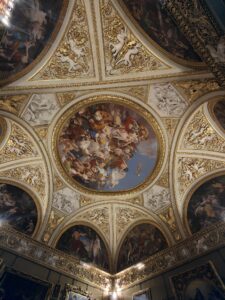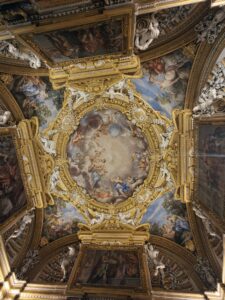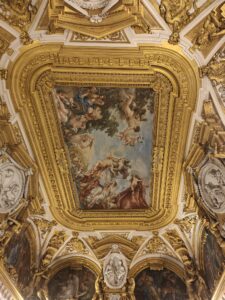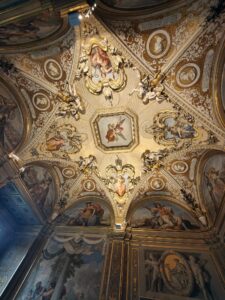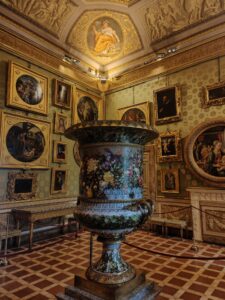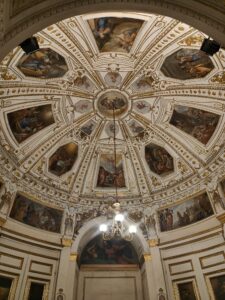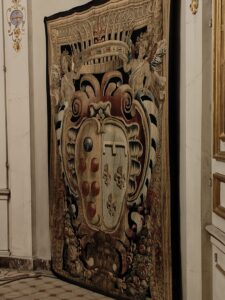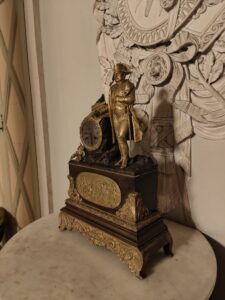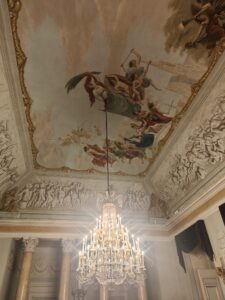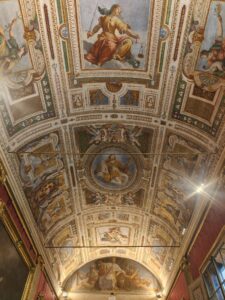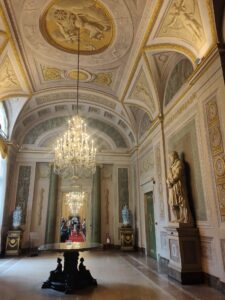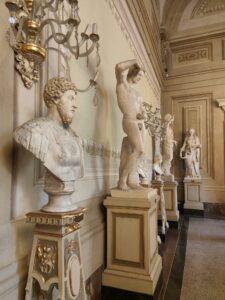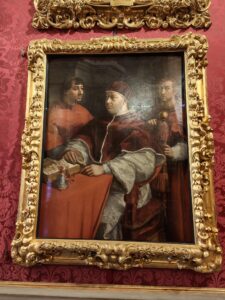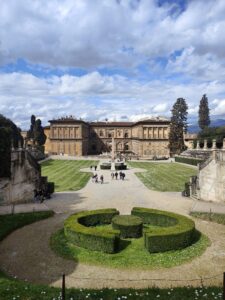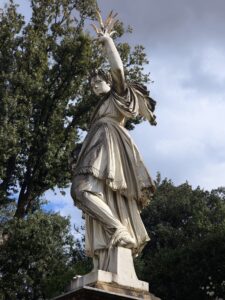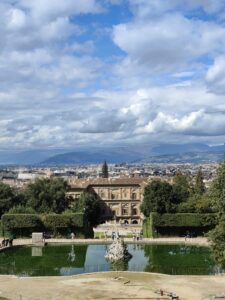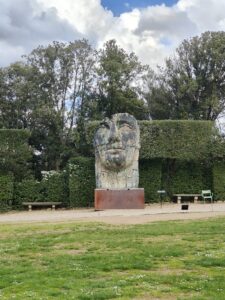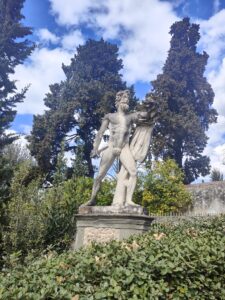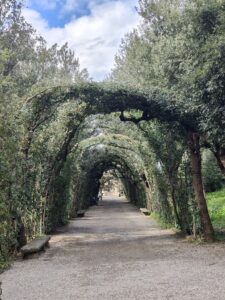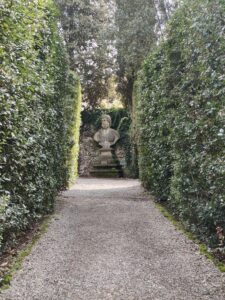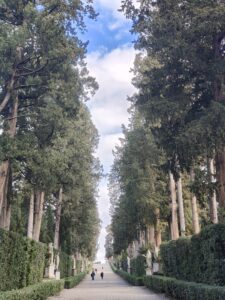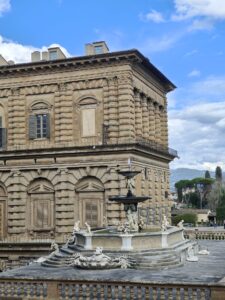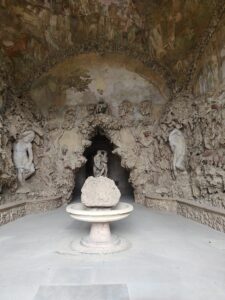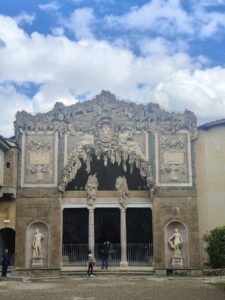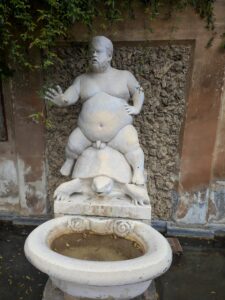Following the visit to Palazzo Vecchio, Florence, Italy I looked to increase my Florentine knowledge. I headed off across the River Arno to Palazzo Pitti. My reasons for visiting were simple. At Palazzo Vecchio I learnt lots about the Medici family and was keen to expand my knowledge of the Medici family.
I must confess that my original discovery of the Medici family came from watching a TV series. The series certainly provided inspiration to visit and explore Florence but exposed major gaps in my knowledge of European history. The series focused on the first line of the Medicis in the 15th century. The Medici family ruled Florence and, later, Tuscany from 1434 to 1737 (apart from two brief intervals). I have drawn a family tree to help with my learnings.
The TV series covers the establishment of the family dynasty in Florence, which left me with an impression that they came to an end after Lorenzo the Magnificent. How wrong could I have been?
It was with my ‘tail between my legs’ that I visited the Palazzo Pitti to enhance this knowledge. The Palazzo Pitti resides on the southern side of the Arno River. It feels slightly detached being away from the city centre. It is located at the foot of the Boboli hills. Read on as I try to explore the largest palace in Florence. As well as continuing my journey to find more about the Medici’s. Included in all this was a visit to the renowned Boboli gardens.
Palazzo Pitti History
The Palazzo Pitti , to this day, is named after its first owner Luca Pitti. There is much myth and mystery surrounding the construction of the original building. No records have been found. Rumours are that the original architect was Brunelleschi. Perhaps it was his pupil, Luca Fancelli, who should take the credit for its designs.
Luca Pitti was an ambitious Florentine merchant who supported Cosimo de’ Medici (the elder) in his government. This brought him much wealth, prosperity and influence. He commissioned a new personal residence, which was to rival the glory of the Medici palazzo. There was rivalry between Pitti and the Medici family. Pitti wanted to become the most powerful man in Florence. Luca saw his opportunity when Cosimo passed away. He was unsuccessful in a coup to murder and overthrow Cosimo’s son Piero. Luca Pitti was pardoned by Piero (almost unbelievable) after his failed coup and before he died in 1473, 9 years after Cosimo. The building remained unfinished but still in the Pitti family. The Pitti family no longer reaped the rewards of their close association with Cosimo, ran into financial difficulties and had to sell.
As I found out at Vecchio Palace, Eleonara di Toledo purchased the Palazzo Pitti in 1549. Her husband was Cosimo I de Medici. The palace was purchased as a family home as they were struggling with living in the Vecchio Palace along with their 8 children. Cosimo instructed his architect Vasari to enlarge the building, making it worthy of a Ducal Palace. This included a programme of renovations and modifications. Cosimo’s second son, Duke Ferdinando I, and his wife were the first ones to live within the palace. Their son Cosimo II married Maria Magdalena of Austria. She brought a vast collection of art with her as part of her dowry. This was a great addition to the Medici collection. Cosimo II also regularly purchased art from Rome. It was clear that each Duke from the Medici line followed the previous incumbent as the collection grew. The paintings were stored in different parts of the palace. At the same time the grounds and gardens were enlarged.
The Medici line came to an end in 1737 (see above). At Palazzo Pitti I discovered that the Medici title ‘Grand Dukes of Tuscany’, passed to the second dynasty to live in the palace, that of the Austrian House of Habsburg-Lorraine. Their occupation of Palazzo Pitti was disturbed for a few years by Elisa Bonaparte taking possession after the French invasion. After the fall of Napolean, the Vienna congress returned the palace back to the Habsburg-Lorraine family. The family continued the renovation of the palace. They also organised the vast art collection. Like their predecessors’ passion, they continued collecting art whilst commissioning more pieces of art and décor throughout the palace. It was this family that opened the palace as an art gallery..
As the Habsburg-Lorraine dynasty came to an end in 1860, so did the Grand Duchy of Tuscany shortly after. Tuscany came under the control of the House of Savoy, the third and final dynasty to live in the palace. It was at this time that Tuscany became one of the provinces of the Kingdon of Italy, during the Risorgimento (unification of Italy). King Vittorio Emanuele II resided in Pitti Palace when Florence was the capital of Italy. The family were overthrown in 1946 as Italy became a republic. Their legacy of the Palace was made in 1919 Vittorio Emanuele III donated the Palace to the Italian state.
Palatine Gallery at Palazzo Pitti
The Palatine Gallery is one of several museum complexes within the Palazzo Pitti . Opened in 1834, it is breathtakingly beautiful! Each room is a treasure trove full to the brim of artistic wealth. This is an endeavour of love, captivating in appearance, meticulously preserved, with plush furnishings, extravagant chandeliers and spectacular ceilings with stunning frescoes. A walk through the gallery is mind boggling leaves the visitor spell bound. An appreciation of the talent on display should be the focus. The incredible collection includes priceless works by Titian, Tintoretto, Caravaggio and Rubens. The gallery is also home to the largest concentration of paintings by Raphael in the world.
Sadly, the vast size of the palace, and not fully knowing my way around, I think I left my visit to the Palatine Gallery. Travesty I know, but proof that I needed more time than I ever thought to explore this palace. The other areas in the palace that I missed included the Royal Apartments, Tapestry apartments, Modern Art Gallery, Fiorino room, Winter Apartments and the museum of costume and fashion. Reasons enough to visit again.
Boboli Gardens
The gardens really are something to behold. As I quickly found out they’re not a whistle stop destination but a vast open-air museum. It requires more time than I thought, firstly to see it all and secondly to truly appreciate its peaceful tranquility.
The Boboli Gardens share a similar path of history to Palazzo Pitti . When Eleonora and Cosimo purchased Palazzo Pitti not only did they start works on the palace but the gardens as well. The first plans were designed by Niccolò Tribolo who sadly never saw the works completed before his death. The honour fell on the famous Giorgio Vasari, who along with Ammannati and Buontalenti completed the initial plans. Not only did other generations of the Medici enlarge and enrich the gardens but so too did the Habsburg-Lorraine and Savoy dynasties add to it.
The Boboli gardens are populated with countless ancient and renaissance statues, large fountains, tree lined avenues and grottos. The garden provides endless opportunities for exploration and enjoyment. Palazzo Pitti looks much better from the gardens side than its ugly front entrance.
The first part of the garden is the amphitheatre which not only provides a view of the rear of the palace but is decorated with statues around the outer edges. Leading up from the amphitheatre you climb several steps as you pass the Forcone Basin and several of the statues scattered around the grounds. At the top of hill, you will see the colossal statue of Plenty, moved to its current location to represent the prosperity of the Tuscan state. Work began in 1608 by Giambologna and completed by Pietro Tacca and Sebastiano Salvini in 1637. Also slightly hidden at the top of the hill is ‘The Knights Garden’ which offers an enchanting view of the local Tuscan hills.
From here navigate your way back down to pick up Cypress Lane, a large path running through the heart of the gardens. It is lined each side with cypress trees and has statues placed at the crossroads as other paths connect to Cypress Lane. If you don’t divert off the avenue to explore these gardens the long downhill path will lead you to the ‘Island Pond’ and beyond this is the Meadow of Columns.
After retracing my steps back to the palace, I find the ‘Buontalenti Grotto’ also known as the ‘Grand Grotto’. On the façade, the Medici coat of arms is supported by two mosaic feminine figures who symbolize Peace and Justice. The lower part of the façade was built by Vasari. In the main it was built by Bernardo Buontalenti between 1583 and 1593 on behalf of Francesco I de’ Medici. The Grotto is a masterpiece of Florentine Mannerist style and is divided into 3 sections. The first section was frescoed and combined with stucco work showing shepherds protecting their flocks from wild beasts. Also, in this first section you will see copies of the 4 “Prisoners” by Michelangelo (the originals have been moved). The other 2 sections that follow exhibit the sculptures “Bathing Venus” of Giambologna and the group of “Paris and Hellen” of Vincenzo de Rossi.
Palazzo Pitti Conclusions
Thus concludes my visit to the Palazzo Pitti , It is an extraordinary palace to visit. It is a palace to rival some of the great European palaces. Its outward appearance is not very alluring, bland and rather dull, especially from the front. What lies behind the grand façade is anything but.
My short visit was not enough. I must return to Palazzo Pitti and ensure that I visit all that it has to offer including more of the Palatine Gallery. The gardens also require further and more in-depth exploration.
I leave the palace overloaded with knowledge and a newfound appreciation for art and decor. I’m sure everyone has heard of Florence but the city is proving to be fascinating. Each place I have visited has been captivating. The next stop on my meandering around this great city is to one of the most famous bridges in the world.

